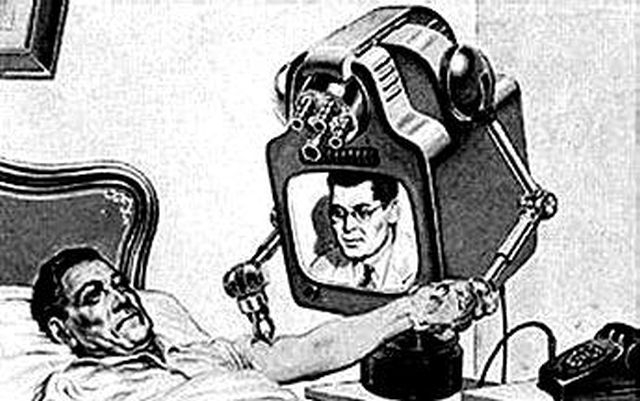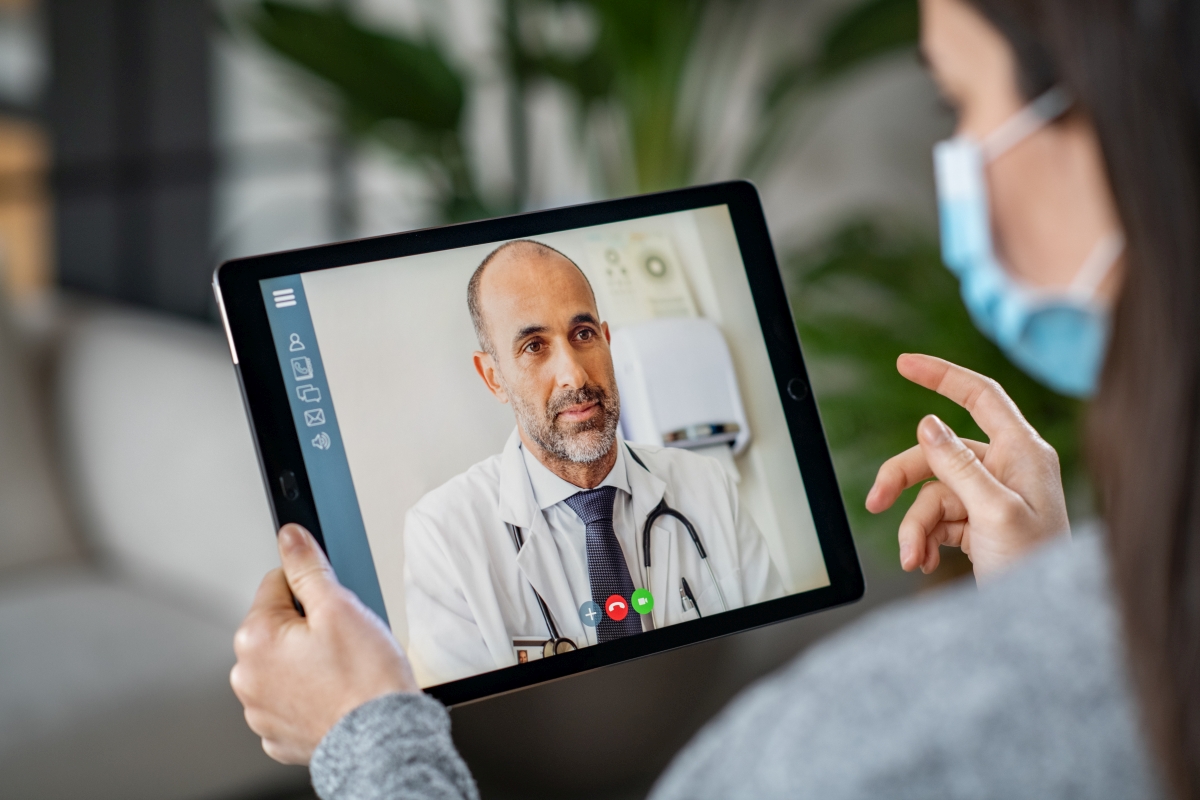Teledoctors: Accessibility to Medical Advice At Any Time, Anywhere
Teledoctors: Accessibility to Medical Advice At Any Time, Anywhere
Blog Article
Teledoctors: Linking the Gap Between Clients and Doctor
The emergence of teledoctors stands for a substantial change in the medical care landscape, using remedies to long-standing availability problems encountered by service providers and clients alike. By integrating telemedicine into conventional practices, health care systems can get to remote and underserved populations, giving important medical examinations without the barriers of range and travel. This standard shift not just improves individual engagement however also enhances source allocation for companies. Nevertheless, the extensive adoption of teledoctors raises vital concerns concerning the sustainability of such practices and the effects for future health care distribution. What challenges exist ahead in ensuring this design's performance and equity?
Rise of Telemedicine

The increase of telemedicine is additionally fueled by the demand for cost-effective healthcare. Healthcare systems internationally are under pressure to decrease costs while keeping high quality treatment, and telemedicine supplies a practical solution. By reducing the need for physical gos to, telemedicine reduces overhanging costs for health care centers and eventually reduces the financial concern on patients.
Additionally, the COVID-19 pandemic functioned as a catalyst, increasing the adoption of telemedicine techniques. Social distancing actions and the requirement to lessen direct exposure risk required a change in the direction of remote assessments, motivating governing bodies to sustain and adapt telehealth solutions. This change has not just tried and tested telemedicine's efficacy but additionally its prospective to evolve as a staple element of contemporary health care systems.
Advantages for Clients
Largely, telemedicine enhances accessibility, enabling people in remote or underserved areas to speak with medical care companies without the need for extensive traveling. Telemedicine also uses clients the ease of receiving clinical guidance and therapy from the comfort of their homes, reducing the time and expense associated with taking a trip to a medical care center.
Moreover, telemedicine sustains connection of care by facilitating regular follow-ups and monitoring, which are essential for taking care of persistent conditions. Individuals can easily arrange appointments and access healthcare solutions outside traditional workplace hours, accommodating their active way of livings. This adaptability brings about boosted individual engagement and adherence to treatment strategies, possibly resulting in much better health end results.
Furthermore, telemedicine can assist mitigate the danger of infection transmission, an issue heightened by the COVID-19 pandemic. By reducing the demand for in-person gos to, people can avoid crowded waiting rooms and reduce direct exposure to infectious health problems. Ultimately, telemedicine encourages patients by providing timely, efficient, and customized healthcare services.
Benefits for Companies
For health care service providers, telemedicine supplies considerable advantages that boost the effectiveness and reach of their practice. By leveraging digital technology, service providers can extend their services to a more comprehensive group, consisting of those in underserved or remote locations. This not only reduces geographical barriers yet likewise maximizes client retention and purchase by making health care much more available.
An additional key advantage is the decrease in overhead costs. With telemedicine, the demand for physical area decreases, enabling carriers to minimize real estate and operational expenditures. In addition, telemedicine assists in better time monitoring by lowering the requirement for travelling and enabling for more flexible scheduling. This flexibility can cause enhanced individual examinations each day, therefore increasing profits potential.
Telemedicine likewise cultivates an extra collective environment for doctor. teledoctors. It enables smooth sharing of patient info among specialists, enhancing analysis precision and treatment end results. Additionally, electronic platforms can integrate with electronic wellness documents (EHRs), enhancing information precision and improving management tasks
Furthermore, telemedicine enhances person complete satisfaction, which is important for provider credibility and success. By providing practical and timely care, carriers can improve client loyalty and involvement, even more strengthening the provider-patient partnership.
Conquering Obstacles
While telemedicine provides numerous benefits for healthcare service providers, it additionally offers difficulties that need mindful consideration. Medical care suppliers have to stick to rigid policies like HIPAA to safeguard delicate details, therefore calling for investment in safe and secure systems and ongoing staff training. teledoctors.
An additional challenge is the digital divide, which can hinder accessibility to telemedicine solutions. Not all individuals have equal access to the required technology or net connection, particularly those in underserved or rural areas. This disparity can worsen existing healthcare inequalities, making it critical for companies to discover different options, such as partnerships with community organizations, to bridge this space.
In addition, there are constraints in performing health examinations from another location. Particular conditions call for in-person evaluation, highlighting the need for a crossbreed design that incorporates telemedicine with typical sees. When telemedicine is suitable and ensuring smooth shifts in between digital and in-person care., suppliers need to browse these difficulties by establishing protocols to identify.
Future of Health Care
The future of next page health care is poised for a transformative advancement, driven by the quick combination of technology and technology. This not just boosts individual benefit but also increases accessibility visit the website to healthcare, specifically in country and underserved locations.
Synthetic intelligence (AI) and artificial intelligence are additionally readied to play essential roles. These modern technologies can analyze huge quantities of data, providing predictive understandings into person wellness, enhancing analysis precision, and individualizing therapy plans. AI-driven devices can boost healthcare service providers' capabilities, bring about more informed decision-making and much better individual end results.
Moreover, wearable innovation and Internet of Medical Points (IoMT) gadgets are revolutionizing patient engagement and proactive health and wellness administration. These tools allow continual health monitoring, permitting very early discovery of timely interventions and potential problems.
As these modern technologies remain to breakthrough, they assure to create an extra reliable, obtainable, and patient-centric healthcare system, inevitably connecting the void in between individuals and medical care service providers. - teledoctors
Final Thought
Teledoctors are transforming health care by substantially boosting access and efficiency with remote examinations. This advancement sustains people in underserved locations by giving timely clinical suggestions without calling for physical visits, thus boosting person involvement and connection of treatment. Doctor take advantage of more reliable time administration and improved collaboration opportunities. Regardless of difficulties such as technical obstacles and regulative problems, the future of health care shows up progressively comprehensive and efficient as a result of the combination of telemedicine into traditional treatment designs.

As telemedicine proceeds to improve health care distribution, patients stand to obtain substantially from this transformation. Primarily, telemedicine improves ease of image source access, allowing clients in remote or underserved areas to seek advice from healthcare providers without the requirement for substantial traveling. Telemedicine likewise offers patients the comfort of receiving clinical guidance and treatment from the comfort of their homes, reducing the time and cost associated with traveling to a medical care center.
Eventually, telemedicine encourages individuals by giving timely, effective, and customized healthcare services.
Report this page